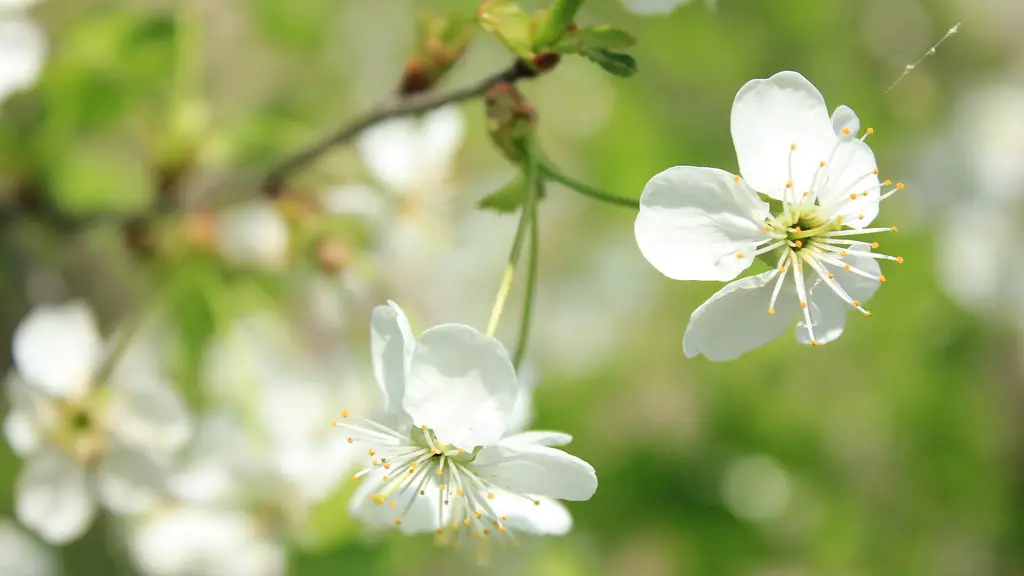Lemon trees are a great addition to any outdoor space and can provide years of fresh lemons, if properly cared for. Learning how to take care of a lemon tree is not difficult, although it does require a bit of knowledge about your local climate and typical growing conditions. Here are some basic tips for caring for a lemon tree outside.
The most important part of taking care of a lemon tree outside is ensuring it has plenty of water and sunlight. Lemon trees are very sensitive to drought and not having enough water can cause the leaves to become dry and brittle, or even fall off completely. Aim to water your lemon tree at least once a week, depending on your local climate. If you see that the leaves are starting to wilt and brown, it is likely time to water your tree.
Proper fertilization is also essential for a healthy lemon tree. Fertilize your lemon tree with a balanced 10-10-10 fertilizer, or something similar, to ensure the tree has all the nutrients it needs to stay healthy. Additionally, adding composted manure or other organic matter to the soil will help it to retain water and provide more nutrients for the lemon tree. For mature trees, fertilize twice a year, usually once in spring and again in fall for optimal growth.
Lemon trees need to be pruned regularly to ensure it does not become overly dense, which can aid in cultivation and treating any pest problems. Pruning should be done in early summer, before the tree flowers. Any dead or diseased branches should be removed from the tree, as should any branches that grow inward or inwards. Additionally, remove any small fruits or immature fruit, as they can strain a mature tree and can encourage pest infestations.
Protecting your lemon tree against pests and diseases is key to a healthy tree. One of the biggest pests of lemon trees is the aphid, which can cause damage to the leaves, fruit, and branches. Control aphids by either spraying insecticides or rubbing the pests off with a cloth dipped in soapy water. Additionally, keep the area around your lemon tree free of debris or fallen fruits, as pests and diseases can thrive in this environment.
Finally, a good tip for keeping your lemon tree in good condition is to mulch around it. This can help to keep the soil moist and to protect the roots of the tree from the elements. Mulch can be any type of soil, from organic matter like compost to stones or bark chips. Mulching also helps reduce weeds growing around the tree, which can compete with the lemon tree for nutrients.
Grafting Lemon Trees
Grafting is the process of attaching a portion of one plant to another. Grafting is a common practice for propagating fruit trees, such as lemon trees. It allows for the production of trees with desired characteristics, such as offering a desirable variety of fruit or disease resistance. To successfully graft a lemon tree, you’ll need to locate a compatible rootstock and a successful scion, or cutting. Both the rootstock and the scion should be healthy and free of diseases.
A number of grafting techniques can be used to join the two plants. The most common are the chip graft and the whip and tongue graft. The method chosen will largely depend on the types of plants being used. With both forms of grafting, the cambium layer must be lined up and cut correctly. This part of the grafting can be tricky, so to ensure success, you may want to take a few practice cuts.
Once the grafting is complete, the scion and rootstock will need to stay joined in some way, typically with grafting tape or bands. It is important to keep the scion and rootstock together until they have fully healed. This healing process may take several weeks, as the two plants need to form a stable connection known as callusing.
Once the union is successful and the graft is healed, the newly formed tree will be able to continue growing and the lemon fruits can be harvested. Proper pruning and caring for your grafted lemon tree will help ensure it has a long, fruitful life. Additionally, make sure to monitor it frequently for different pests and diseases.
Fertilizing Lemon Trees
An essential part of caring for a lemon tree is providing adequate fertilization. Fertilizer provides the tree with the necessary nutrients to help it to grow and thrive. High-quality fertilizers contain nitrogen, phosphorus, and potassium, along with several other trace elements that are beneficial to trees. Over-fertilizing can lead to a build-up of salts in the soil, so it is important to be aware of the proper amount of fertilizer to use.
When to fertilize will vary depending on the season and the size of the tree. In general, begin fertilizing young trees in the spring or summer of the following year and mature trees should be fertilized twice a year. Fertilizing during the summer months gives a lemon tree the opportunity to absorb as much of the nutrients as possible and encourage healthy new growth.
When fertilizing a lemon tree, it is important to remember that too much fertilizer can cause leaf burns. A good general rule is to use a balanced 10-10-10 fertilizer, or something similar. Additionally, consider adding composted manure or other organic matter to the soil for added nutrients. Spread the fertilizer around the base of the tree and make sure to water it in.
Organic fertilizers, such as compost tea, can be applied to trees in place of synthetic fertilizers. Compost tea is a mix of organic material that has been brewed with water and is great for fertilizing plants, as it contains beneficial microorganisms that can help the growth and health of the tree. Depending on the size of the tree, it can be beneficial to spray the tree with compost tea every two weeks during the flowering and fruiting season.
You can also opt for foliar feeding, during which fertilizer is dissolved in water and applied directly to the leaves of the tree. Doing so allows the leaves to absorb nutrients directly, as opposed to waiting for the nutrients to be absorbed through the soil. Foliar feeding is especially useful during times of extreme stress or extreme temperatures.
Pruning Lemon Trees
Pruning is an important part of caring for a lemon tree and should be done regularly to keep the tree healthy and productive. Pruning helps to keep the shape of the tree and can also prevent excessive growth and potential pest and disease issues. Pruning should be done in early summer, before the tree begins to flower and fruit. The main purpose of pruning is to reduce the number of flowers and fruit and thin out thick branches.
When pruning, it is important to remove any dead, diseased, or weak branches. Additionally, any branches that grow inward or inwards towards the tree should be removed. This will allow air and light to reach all parts of the tree and encourage proper growth. You should also remove any small fruits or immature fruit, as these can hamper the growth of a mature tree and can potentially lead to pest infestations.
It is also important to be aware of the overall size of your lemon tree and prune accordingly. If the lemon tree is becoming too big, it may be necessary to prune back some of the larger branches. When pruning, make sure not to remove too much of the branch, as it can cause damage to the tree. Additionally, make sure you prune with clean pruning shears, as this will help to prevent the spread of disease.
Finally, the removal of suckers and epicormic shoots is another form of pruning that can help to encourage the growth of new branches and increase the productivity of your lemon tree. Suckers are shoots that can grow along the base and sides of the tree and epicormic shoots are those that grow directly from the trunk or larger branches. Removing these shoots encourages growth of healthy new branches and should be done if needed.
Protecting Lemon Trees from Pests and Diseases
One of the most important elements of caring for a lemon tree is protecting it from pests and diseases. Pests like aphids, mealybugs, scale, and whiteflies can cause serious damage to lemon trees. Additionally, diseases like botrytis can affect the tree’s health, leading to decline and even death. It is important to be vigilant and watch for any signs of pests or diseases on your lemon tree.
To protect your lemon tree, check it regularly and remove any pests or diseased branches or leaves you find. You can discourage pests by keeping the area around your tree free of debris and fallen fruit. Additionally, you may want to spray your tree with an insecticide or essential oil to discourage pests. For diseases, there are a variety of fungicides that can be used, depending on the type of disease you are dealing with.
In addition to spraying the tree, you may want to consider placing fine mesh netting over the crown of your lemon tree. This will help to keep birds away, as they can be a carrier of pests and diseases. Additionally, installing bird netting over the tree can also be beneficial in discouraging birds from taking your fruit.
Finally, using horticultural oil or insecticidal soaps can help to keep pests away from your lemon tree. Both of these have a mild formula and do not cause any long-term damage to the tree. Make sure to read the directions and follow them carefully, as these products should only be used when the tree is not in flower and before the fruit begins to form.





